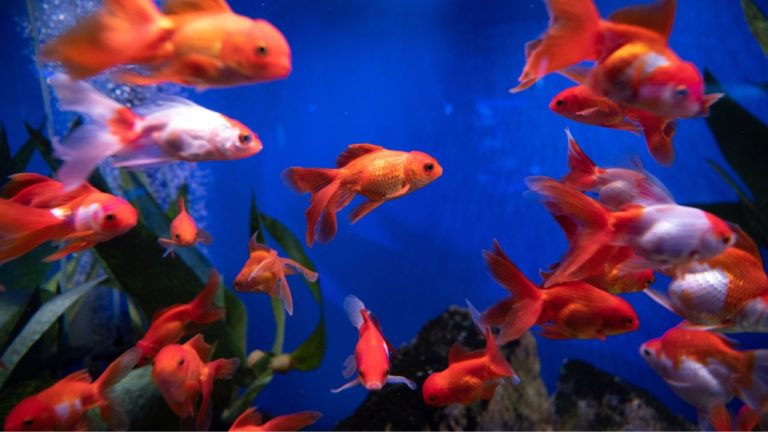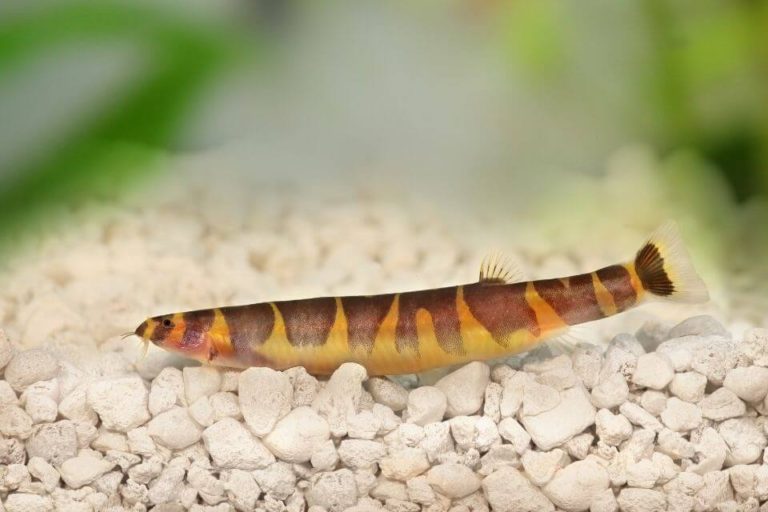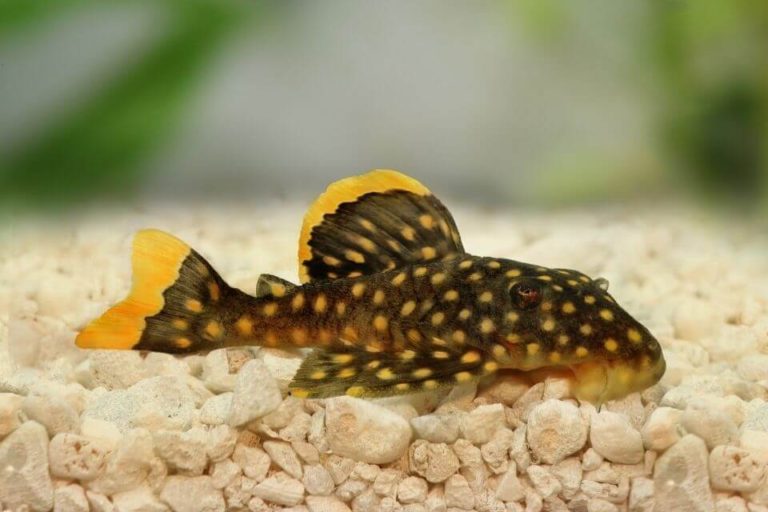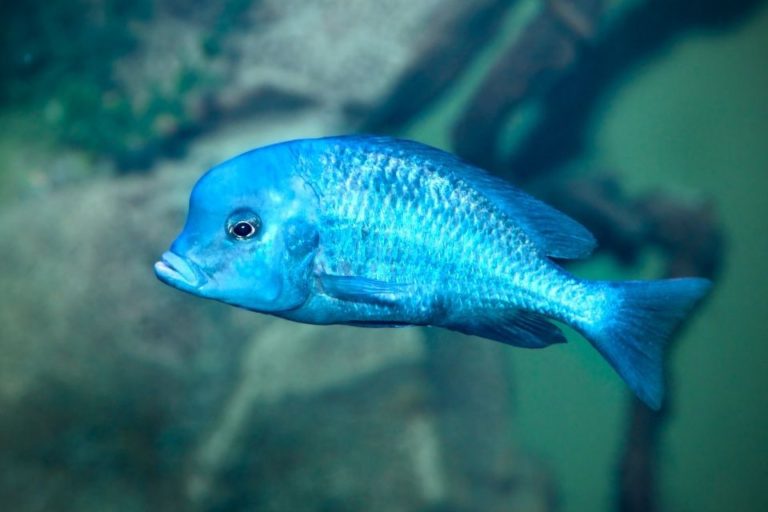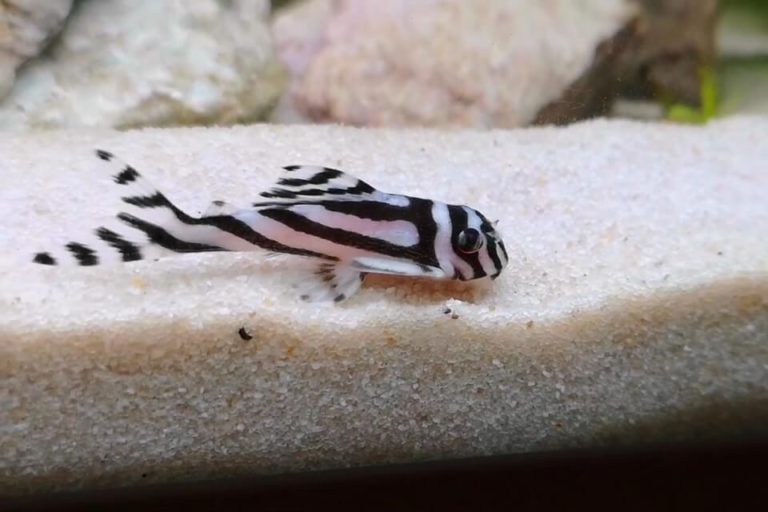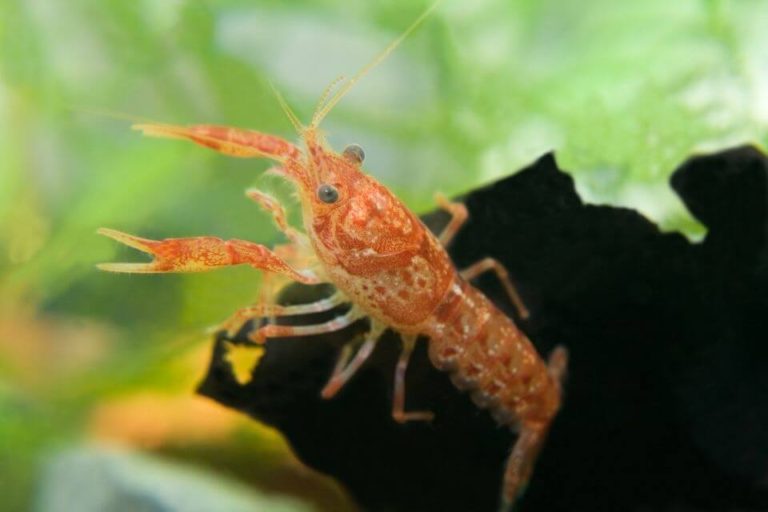Crowntail Betta Care Guide – Tank Setup, Tank Mates, Diet and Breeding

Crowntail Betta fish is the most beautiful and stunning fish species in the betta family. Their colorful caudal fins make them stand out in your freshwater aquarium.
In addition, this colorful species will bring an eye-catching appearance to the tank. Betta species is a highly popular freshwater aquarium fish that is known for its beautiful fins and scales, making it a colorful addition to any size aquarium.
Most of the time Betta fish are kept alone and because of this reason choosing the best tank for Betta fish is important. Whether you are a novice fishkeeping or an expert, you will find fish to be a stunning and unique creature for your tank.
There are a few challenges and particularities that could make this fish hard to care for under certain conditions. As long as you learn about this species and how to give the best care, you can successfully own this beautiful Betta for many years to come.
Take a look at the below Crowntail Betta Care guide where you can find quick facts and care tips.
| Quick Facts: | |
|---|---|
| Common Names | : Crowntail Betta, Siamese Fighting Fish |
| Scientific Name | : Betta splendens |
| Family | : Osphronemidae |
| Origin | : Thailand |
| Care Level | : Moderate |
| Lifespan | : 2 - 3 years |
| Size (average) | : 2 - 3 inches long |
| Diet | : Omnivores |
| Breeding | : Egglayer |
| Social | : Territorial |
| Temperament | : Aggressive |
| Minimum Tank Size | : 5 gallons |
| Temperature | : 76° to 80°F |
| Water Hardness | : 2 - 5 dKH |
| Water pH Level | : 6.5 - 7 |
Overview of Crowntail Betta
Like many beautiful freshwater fish species, Crowntail Bettas are native to rivers and shallow water bodies of Southeast Asia.
Due to the variety of color combinations and beautiful tails, these Bettas are some of the most popular freshwater fish among aquarists of all time.
They are sought after all over the world as solo pets or as additions to tank communities. The Crowntail Betta also goes by the nickname “Siamese Fighting Fish”, as they can be quite aggressive towards each other.
They are not aggressive all the time, though, making them a good option for many different types of aquariums as long as you follow the proper guidelines for their care.
No matter what kind of tank setup you are planning to have, you can make the Crowntail Betta one of the most beautiful parts of the entire aquarium.
Crowntail Betta Size
When fully grown, Crowntail Betta size can grow to be up to 3 inches long. Different tank and breeding conditions may increase or decrease the size of your fish.
– How Big Do Male Crowntail Bettas Get?
Crowntail Betta males and females are typically around the same size. Average Crowntail Betta males grow to be between 2.5 and 3 inches.
– How Big Do Female Crowntail Bettas Get?
Crowntail Betta female usually grows to be the same size as Crowntail Betta males, averaging between 2 and 3 inches long when fully grown.
Crowntail Betta Lifespan
They do not live very long. Aquarium keepers should keep this in mind when looking to acquire more fish. Crowntail Betta lifespan is usually about 2 to 3 years old and this is due to their small size.
Most smaller freshwater fish from warm tropical regions only live for a few years, but breeding and acquiring more of them is not very difficult.
Crowntail Betta Typical Behavior
If there is one thing you may already know about Crowntail Bettas, it is that they can be quite mean to one another. Unfortunately, they are bullies that will push other fish around when given the chance.
This is mostly due to the fact that bettas are very territorial, and so they feel threatened whenever another fish gets near their space. Crowntail Bettas are particularly aggressive towards fish that are their same size or smaller.
They will also pick on slow fish if given the chance. When they are ready to attack, they will flare out their face and tail fins to intimidate each other. Suddenly, they will bite the other fish until they are dead.
The social patterns and behaviors of bettas are incredibly complex. Male Crowntail bettas who see each other will very often start gearing up for a fight, even if it is actually just one male betta looking at his reflection through the tank glass.
They use a combination of their colorful fins and scales with smooth movements to either intimidate others or impress females of the species.
Crowntail Bettas are incredibly intelligent and can learn from new stimuli in their environment. Changes in the world around them can change the way they interact, behave, and form survival tactics.
Depending on how you plan on setting up your aquarium, it is possible to keep multiple bettas at once, as well as with other species of fish.
Characteristics of Crowntail Betta
Crowntail Bettas similarly resemble other species of bettas, but some key differences make them unique. The most noticeable feature of this particular Betta species is the caudal and anal fins, which can stretch up to three times longer than the body of the fish.
These fins have webbed edges that can fan out and become flared when the fish is engaged in aggressive behavior.
Appearance, Colors, and Special Markings
Crowntail Betta bodies are long and slender, with scales that come in a variety of colors. The body and fins of bettas are all incredibly unique from each other, which is one reason why they are so desirable in aquariums across the world.
Their gills and fins usually rest flat against their bodies, but flare out immensely when they are trying to intimidate others.
Betta gills are interesting in that they can expand to give the appearance of a beard around the fish’s face. This makes the fish look scarier when pitting itself up against others of the same kind.
Crowntail Bettas can be found in white, black, neon blue, purple, vibrant red, bright orange, green, and metallic colors. They have some of the most diverse and unique color palettes among fish, with no two bettas looking exactly the same.

Crowntail Betta Care and Habitat
In order to keep your bettas healthy and thriving, you need to set up the proper tank environment for them. The right aquarium habitat can be a haven for your Crowntail Bettas, but it requires a little bit of time and research to get it right.
As active fish, Crowntail Bettas like to jump. It is important that you invest in a tank with a secure lid so these fish do not accidentally escape their habitat and jump to their deaths.
Tropical waters mean that bettas are used to warmer temperatures, with sudden climate changes doing much more harm than good.
One thing that makes these bettas easy to take care of is the fact that you don’t need additional aeration equipment for your tank. Bettas can get oxygen both from the water and the air, so they do not need added currents in order to breathe.
You can keep your tank setup fairly simple while keeping in mind a few specific conditions that can make your bettas comfortable.
Here are some aquarium suggestions and specifications for you to follow.
– Crowntail Betta Tank Size
The size of tank you want to get depends upon the number of Crowntail Bettas you plan to keep, as well as whether or not you plan to keep other fish in there with them.
A single betta can be kept alone in a 2 to 5 gallons tank, but it is recommended to choose a size larger than that. You probably need at least 5 gallons or above for your Crowntail Betta to be comfortable in its’ habitat.
The more fish you have, the bigger your tank size needs to be especially when you keeping with different other Crowntail Betta tank mates. Choosing the best Betta Fish Tank is essential for the long run.
Not only do these territorial fish require a bit of space to swim around, but they also can easily bump into the glass and hurt their fins if they are squished in a space that doesn’t have enough room.
– Crowntail Betta Tank Setup
The best way to ensure a healthy and happy habitat for your Crowntail Bettas is to set it up in a way that mimics the natural waters of Southeast Asia.
Bettas are often found in rice paddies, which are natural pools with plenty of vegetation and other organic materials. Soft plants and floating vegetation are the best kinds of organic materials for your bettas.
Plants with broad leaves and hard plastic plants with bristles are likely to damage the delicate and long fins of your betta fish, which could make it difficult for them to swim.
Bettas do not usually spend a lot of time at the bottom of the tank unless they are not feeling well. Therefore most types of substrate will work but choose the best substrate for betta fish that enhances the tank appearance.
It is best to add substrate that mimics their natural habitat; in which case, gravel or bare-bottom options with minimal decorations work best.
Lastly, it is important to put them in a dimly lit aquarium. Water with too much lighting can make them sick, as they are used to murky and dark waters in the wild.
– Suitable Plants
Since any hard or sharp material can hurt Crowntail Bettas, it is best to invest in floating vegetation for your tank. Other suitable aquatic plants may include:
Some fake plants are acceptable, but make sure that it is not possible for your betta’s tail fins to be caught.
Expert's Advice: Using live plants in your aquarium is optional, and you can use artificial plastic plants but it can harm the fins of Crowntail Betta fish. Unlike plastic plants, live plants maintain the water freshness by adding oxygen, utilizing nitrates, and removing carbon dioxide from the water. Hence the live aquarium plants are recommended.
– Water Temperature and Parameters
There are specific water temperature regulations that you should follow in order to keep your Crowntail Bettas happy in your tank. Keep the following parameters in mind:
- Water temperature: It is ideal to keep your tank at 80°F, but a range of 76° to 80°F is sufficient to keep bettas healthy.
- Water pH levels: Crowntail Bettas are not used to acidic water, so make sure to keep pH levels close to neutral. Between 6.4 and 7.0 is a good range for these fish.
- Water hardness: Betta fish can live within a wide range of water hardness levels. For the most part, levels between 2 and 5 dKH (Degrees of carbonate hardness) will make them comfortable.
Crowntail Betta Diet and Feeding
One of the most challenging aspects of Crowntail Betta care is managing a proper diet for these fish. While you should have no trouble finding the proper food to feed them, getting them on a good feeding schedule can be difficult.
Some bettas are picky about what they eat, making it a challenge to support their good health.
What do Crowntail Betta Eat?
As carnivores, Crowntail Bettas need a lot of protein to survive. They have small stomachs so you need to feed them often.
It can be hard to feed one food item to your bettas consistently; therefore, a mix of high-protein foods is recommended. Healthy Crowntail Bettas thrive from the following:
Crowntail Bettas are hardy and so you should not have an overly hard time getting your bettas to eat. You might need to provide a constant mix of proteins to keep them interested, however.
How Often Should You Feed a Crowntail Betta?
It is recommended to feed your Crowntail Bettas 2 to 3 times per day. With small stomachs, they cannot eat much, so it is important not to fill up the tank with too much food.
Any leftover flood floating around in the tank after feeding should be cleaned up and thrown out right away. Bettas have a bad habit of overeating and hurting themselves, which could cause them to die.
If your bettas are taking longer than 2 minutes to eat, then they are overeating. Leftover food can also cause bacteria to form in the aquarium water, which could put all of your creatures at risk of getting sick.

Common Diseases of Crowntail Betta
Crowntail Bettas are hardy with their diet but delicate with their other body parts, making them susceptible to a number of ailments and diseases. Here are some common diseases and issues to be aware of.
Overeating
As mentioned previously, bettas are susceptible to overeating. There are some symptoms of overeating to be aware of:
- Swollen body
- Bulging face and eyes
- Constipation
You must closely monitor their eating habits to avoid overeating, as it is easy for them to die from this.
Bacterial Infections
A number of bacterial infections including Crowntail Betta fin rot are found in fish that live in tanks with poor water conditions. Plants can also cause fungal issues which affect the skin and body of the fish.
This can be treated with water solution and better tank conditions.
Ich
Ich is a common freshwater fish disease marked by patches and spots on the betta’s skin. The fish will try to itch its body using decorations or rocks. There are medications available to treat fish with Ich.
How To Know Crowntail Betta Male or Female?
There are distinct body and coloring differences between male and female Crowntail Bettas.
Most aquarists and aspiring fish owners seek out male bettas because they are the more brightly colored of the two, and they also sport much longer fins.
Female bettas have duller colors and smaller fins, and because of this they are usually much less desired.
Her coloring can darken when she is responding to a male’s mating call, and she can sometimes mimic the aggressive behaviors of the male. But for the most part, females are milder and less colorful.
There is not a huge size difference, although females are often seen as smaller than males because they do not have the body or anal fins that add several inches to the male betta’s length.
Breeding the Crowntail Betta
If you are able to provide the right tank conditions for your Crowntail Betta fish, you may witness the mating process. This is a unique one among freshwater fish and one that might require some time and patience to manage successfully.
The first sign of successful betta breeding is the clusters of air bubbles near the surface of the water. If you notice this, do not get rid of it – it might be a bubble nest. The male creates this near plants or other objects at the surface of the water.
These bubbles will later be fertilized by a pair of bettas when the mating process begins. You should begin breeding Crowntail Bettas around 13 to 14 months of age, or over 2 inches long.
You should separate them into their own tank when they are ready to mate, as they can become quite aggressive during this process. It is also for the betterment of the newborn fish that they are kept in a separate tank.
This keeps other creatures from eating the fry. Breeding Crowntail Bettas is possible but it can be difficult and time-consuming. Many aquarists find it easier to purchase adolescent or mature bettas from a supplier or pet store.
Crowntail Betta Tank Mates
As aggressive fish, Crowntail Bettas can be difficult to keep with other fish – but it isn’t impossible. The most important thing to remember is that you cannot overcrowd the tank, or else the fish will become overly aggressive.
It is not a good idea to keep these fish with others who are equally aggressive or territorial. They are also known to fight bigger fish. Bettas can coexist with smaller and more peaceful fish who dwell in a different part of the tank.
Crowntail Bettas usually live in the upper and middle parts of the tank, so fish that usually live near the bottom might be good options.
Proper tank mates for bettas include:
- Guppies
- Shrimp
- Neon tetras
- Frogs
It is also important to watch your betta’s behaviors as it interacts with the other creatures in your tank. If you notice it getting aggressive, you may not be able to have them coexist as tankmates.
Origin, Distribution, and Availability
This particular species of betta fish is native to Thailand, and can also be found in Malaysia, Vietnam, Indonesia, and Cambodia. Since their discovery, they have quickly become some of the most widely distributed fish of all time.
The first record of Crowntail Bettas being bred in captivity is in 1997 when Achmad Yusuf presented the bred fish at the International Betta Congress.
His species was particularly known for being the first to sport the long and colorful fins that most bettas have now. Since then, the species has grown to be one of the most widely bred aquarium fish in the world.
You can find Crowntail Betta for sale in almost any pet store or through a freshwater fish supplier. Bettas are some of the most popular and common aquarium fish, making them a good choice for aquarists without access to exotic suppliers.
They are also some of the most affordable freshwater fish, giving them low startup costs for those who are just starting out.
Are Crowntail Bettas Fin Nippers?
Crowntail Bettas will bite and thrash at other fish who they feel are encroaching on their territory. They are known to start attacks against similarly-sized fish or even bigger fish that hang around their territory.
They do not nip fins in particular, but bettas are prone to biting all over. Crowntail Bettas might be dangerous for some of the more peaceful top-dwelling fish in your aquarium.
Are Crowntail Bettas Aggressive?
There are many different species of betta fish that are all aggressive, but some display more aggressive behaviors than others.
Crowntail Betta fish are one of the more aggressive subspecies, making it difficult to get them to peacefully coexist with most other types of freshwater fish.
The actual level of aggressiveness displayed by each betta can vary by fish. Each one is very unique, not just in its coloring but in its behaviors as well.
Most bettas are expected to puff up and extend their fins when they feel threatened by another of its kind. The betta’s genetics will ultimately decide how aggressive the fish turns out to be.
You can make the fish much less aggressive by adding almond leaves to the tank. This is not only a natural element that can help the fish feel safer, but it is also a good way to provide shade.
Less light makes it harder for the betta to see its reflection as well as other fish that pass it by, making it more inclined to be peaceful.
Final Thoughts
As long as you are prepared to house aggressive fish, the Crowntail Betta fish can be a great addition to your tank. Choosing a best Betta Fish Tank would be the first thing you should do.
Whether you are a novice fish owner or someone who is experienced with a variety of species, you will find these bettas to be unique creatures that can bring brightness and variety to your aquarium.
It can be challenging to take care of Crowntail Bettas, but as long as you have the proper tank setup and conditions, you will have an easy time managing them.
As long as you follow the parameters and recommendations laid out in this guide, you can learn how to properly care for healthy and happy Crowntail Bettas.


